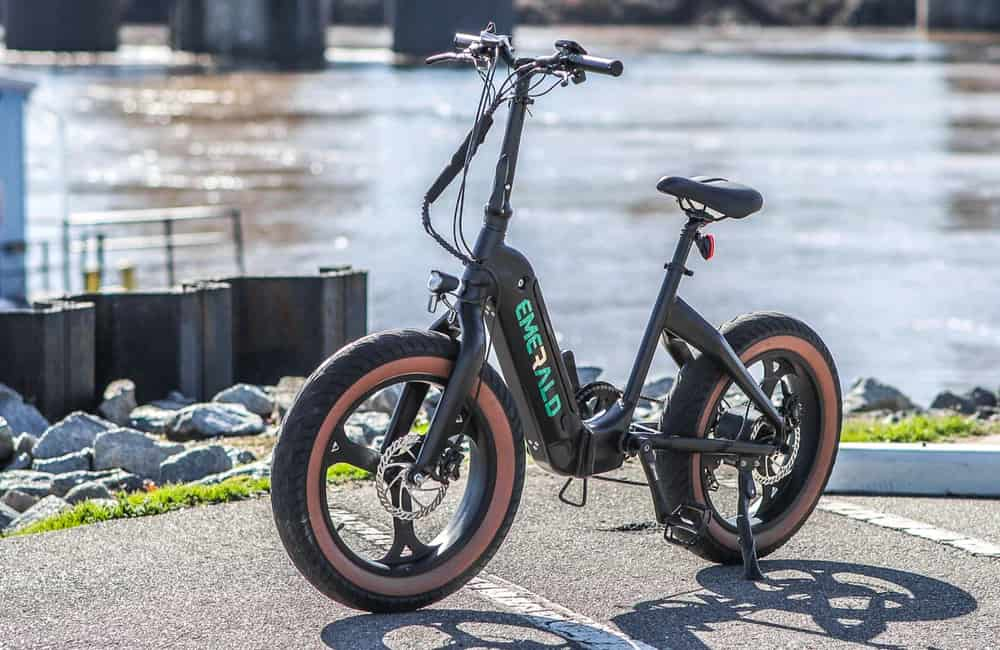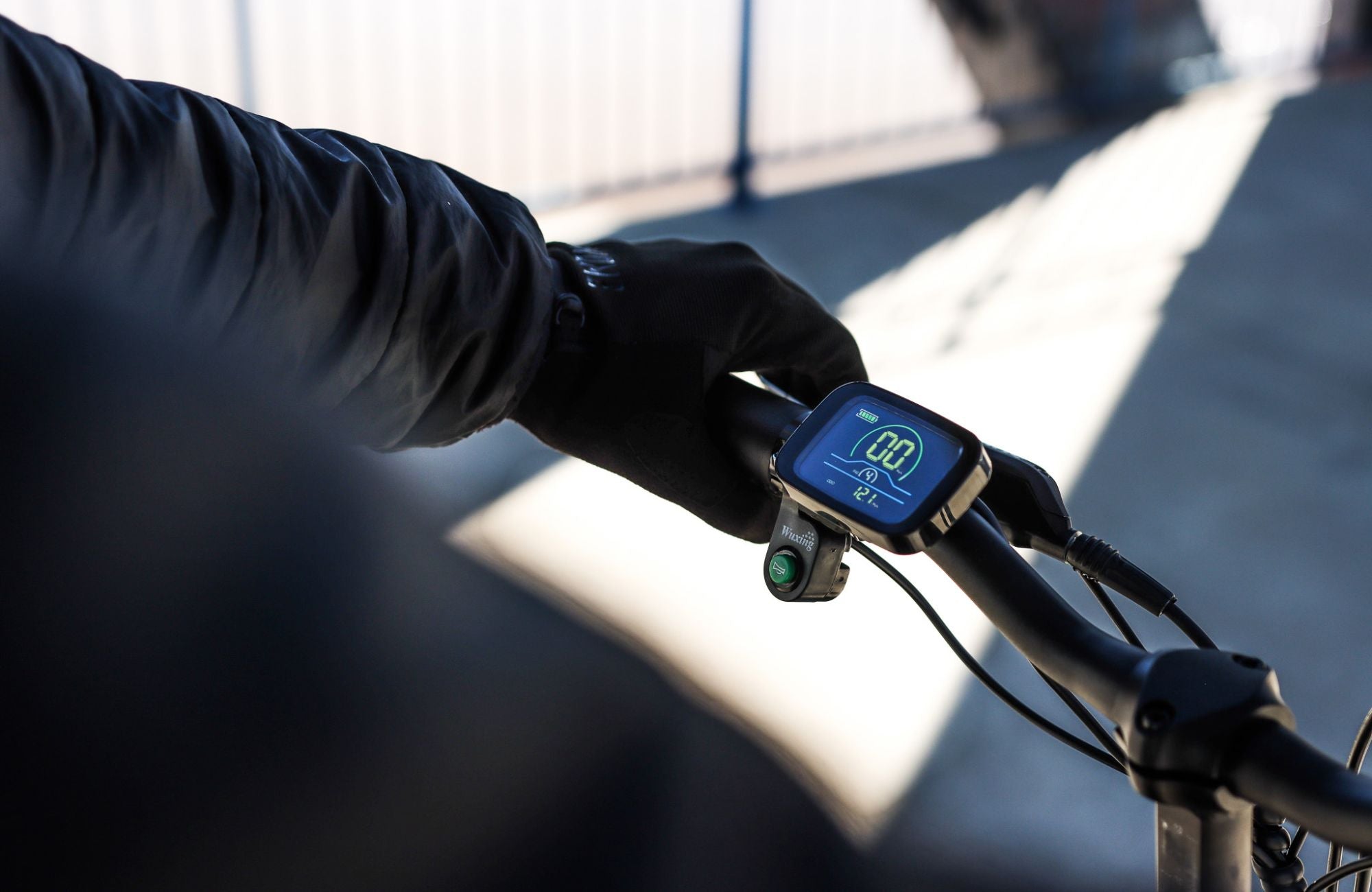Electric bikes, also known as ebikes, are gaining popularity worldwide as a favorite among sustainable modes of transportation. Ebikes are equipped with a rechargeable battery that powers an electric motor to assist the rider's pedaling. The battery is the most crucial component of an ebike, as it directly impacts the bike's performance and range.
Understanding the basics of an ebike battery, such as its capacity, charging cycles, and maintenance, is essential to ensure the longevity and reliability of the ebike. In this article, we will explore the fundamentals of ebike batteries and provide tips on how to maintain and extend their lifespan.
Ebike Battery Basics
There are several types of ebike batteries available in the market, each with its pros and cons. Lithium-ion batteries are the most popular type of ebike battery (and arguably the best battery) due to their high energy density, low weight, and long lifespan. Nickel-metal hydride (NiMH) batteries are less efficient but are less expensive. Lead-acid batteries are the cheapest option but are the heaviest and least efficient.
Voltage and capacity are two crucial specifications to consider when choosing an ebike battery. Voltage measures the amount of electrical energy that the battery can deliver to the motor, while capacity measures the amount of electrical energy the battery can store and deliver to the motor over time. The higher the voltage and capacity, the longer the battery will last.
Watt-hours (Wh) is a unit that measures the amount of energy a battery can store and deliver over time. It is calculated by multiplying the voltage by the capacity. The watt-hour rating is useful for comparing the energy capacity of different batteries.
A battery management system (BMS) is an electronic system that monitors and controls the battery's charging and discharging process. It ensures that the battery operates within safe limits and prolongs its lifespan. The BMS also protects the battery from overcharging, over-discharging, and short circuits.
The charging time of an ebike battery depends on its capacity, the charger's output, and the battery's state of charge. The most common charging method is using a wall charger that connects to the ebike's battery. It is important to use the manufacturer's recommended charger and not overcharge the battery, as this can shorten its lifespan. Some ebikes also have the option of removing the battery and charging it separately.

Factors Affecting Battery Life
Temperature is an important factor that affects the lifespan of ebike batteries. Extreme temperatures, whether hot or cold, can significantly reduce the battery's performance and lifespan. High temperatures can cause the battery to degrade quickly, while low temperatures can cause the battery to lose capacity. It is essential to store ebikes in a cool and dry place and avoid exposing them to extreme temperatures.
The number of times you charge your ebike battery also affects its lifespan. Lithium-ion batteries have a limited number of charging cycles, and each cycle reduces the battery's overall capacity. It is essential to avoid overcharging or undercharging the battery and follow the manufacturer's guidelines on charging cycles. It is also recommended to avoid fast charging, as it can reduce the battery's lifespan.
The terrain you ride on, the weight of the rider, and the overall speed also affect the battery's lifespan. Riding on hills or rough terrain requires more power and can drain the battery quickly. Similarly, riding at high speeds also puts a strain on the battery, reducing its lifespan. It is recommended to avoid extreme riding conditions and maintain a moderate speed to conserve the battery's life.
Proper maintenance is crucial to maximizing the lifespan of an ebike battery. It is essential to keep the battery clean and dry, avoid exposing it to moisture, and check the battery's connections regularly. It is also recommended to store the battery at room temperature and charge it regularly, even when not in use.
Tips to Extend Ebike Battery Life
Keeping your ebike battery charged is one of the most important things you can do to extend its lifespan. Lithium-ion batteries, which are commonly used in ebikes, have a limited number of charging cycles. Therefore, it is essential to keep the battery charged and avoid draining it completely. It is also recommended to charge the battery before it reaches a critical low level to avoid over-discharging.
Using the correct charger is crucial in extending your ebike battery life. Using a charger that is not designed for your ebike battery can damage the battery or reduce its lifespan. It is recommended to use the charger provided by the manufacturer or one that is specifically designed for your ebike battery.
Temperature is a significant factor that affects the lifespan of an ebike battery. High temperatures can cause the battery to degrade quickly, while low temperatures can cause the battery to lose capacity. It is recommended to store the ebike battery in a cool and dry place and avoid exposing it to extreme temperatures.
Carrying heavy loads can put a strain on the ebike battery and reduce its lifespan. It is recommended to avoid carrying heavy loads or using the ebike for activities that require heavy lifting, like towing trailers or carrying heavy cargo.
Proper maintenance of the ebike is crucial in extending the lifespan of the battery. Keeping the ebike clean, checking the connections regularly, and ensuring that the tires are properly inflated can reduce the strain on the battery and extend its life.
Using pedal assist can help extend the life of the ebike battery. Pedal assist mode helps the battery last longer by reducing the load on the battery. It is recommended to use pedal assist mode when possible and only use the throttle mode when necessary.

Maintenance and Repair
Maintenance Tips:
Cleaning the battery is an essential part of maintaining an ebike. Dirt, dust, and debris can accumulate on the battery, reducing its performance and lifespan. It is recommended to clean the battery regularly with a soft cloth and mild detergent.
Regular inspection of the battery can help detect any potential issues before they become more significant problems. It is recommended to check the battery's connections, wires, and terminals regularly and ensure that they are clean and secure.
Repair Tips:
If the battery is not holding a charge or has significantly reduced capacity, it may be time to replace the battery. It is recommended to replace the battery with one that is specifically designed for your ebike to ensure maximum compatibility and performance. With the recent rise in fires caused by ebike batteries in e-micromobility devices, it is more important than ever to use high-quality batteries that meet industry standards such as a Samsung battery and avoid “universal” battery chargers.
Large cities where electric transportation is extremely common have been especially affected by these accidents, where owners are unaware of the dangers that come with choosing not to invest in a high-grade battery. Lithium-ion batteries are completely safe unless they are faulty or damaged, which tend to occur in cheap knockoffs.
Damaged wires or connections can significantly affect the battery's performance and lifespan. It is recommended to repair damaged wires or connections as soon as possible to prevent further damage.
If the charger is not working correctly or is not charging the battery, it may be time to replace the charger. It is recommended to use the charger provided by the manufacturer or one that is specifically designed for your ebike battery.
If you are unsure about how to repair or maintain your ebike battery, it is recommended to consult a professional. A professional can diagnose any issues with your battery and provide you with recommendations on how to repair or maintain it.
To Wrap Up
All in all, understanding the basics of ebike batteries is crucial for any ebike rider. We have discussed the essential components of an ebike battery, such as capacity, charging cycles, and maintenance, and provided tips on how to maintain and extend their lifespan. Regular battery maintenance and care are critical to ensure optimal ebike performance, longer battery life, and better range.
By following the recommended maintenance tips, such as avoiding extreme temperatures, proper charging, and regular inspection, riders can extend their ebike battery's lifespan and enjoy a longer, more efficient ride. We encourage ebike riders to take the necessary steps to extend their battery life and get the most out of their ebike experience.

Common Questions About Ebike Batteries
How long do ebike batteries last?
Generally, most ebike batteries can last anywhere from 3 to 5 years or around 500 to 1000 charging cycles. However, if the battery is well maintained and cared for, it can last longer. It's important to note that the battery's capacity will gradually decrease over time, resulting in shorter rides and reduced performance. It's recommended to replace the battery once its capacity has reduced to 70% or less of its original capacity.
How do you charge an ebike battery without a charger?
It is not recommended to charge an ebike battery without a charger, as doing so may damage the battery and potentially cause a safety hazard. Ebike batteries require a specific voltage and amperage to charge correctly, and using an improper charging method may cause overcharging or undercharging, leading to battery damage or failure.
However, in case of emergency situations where the charger is unavailable, some ebike batteries can be charged using an alternative charging method. For example, some ebike batteries can be charged using a USB cable connected to a computer or a power bank with a USB port. However, this charging method is not recommended for all ebike batteries, and it may take longer to charge the battery compared to a standard charger.
How much does an ebike battery cost?
The cost of an ebike battery varies depending on several factors, such as the battery's capacity, quality, and brand. On average, ebike batteries can cost anywhere from $500 to $900 or more. Higher capacity batteries, such as those with a capacity of 500Wh or more, are generally more expensive than lower capacity batteries.
The cost of an ebike battery is a significant investment, and it's important to consider the battery's quality and reliability before making a purchase. Cheaper batteries may not have the same performance or longevity as higher quality batteries, and they may require more frequent replacements, resulting in higher long-term costs.
Can you ride an ebike without the battery?
Yes, it is possible to ride an ebike without the battery, but it will require more effort and work from the rider as the electric motor will not provide any assistance. Ebikes are designed to be pedaled like regular bicycles, and the electric motor provides additional power to assist the rider's pedaling. Without the electric motor, the ebike will function like a regular bicycle, and the rider will have to rely solely on their pedaling power.
Q & A About Ebike Batteries Exploding
What makes an ebike battery explode?
There are several factors that can cause an ebike battery to explode, including:
To minimize the risk of an ebike battery exploding, it is important to follow proper charging and storage procedures, avoid exposing the battery to extreme temperatures, and inspect the battery regularly for any signs of damage or wear. Additionally, it is important to use high-quality batteries from reputable manufacturers and to follow the manufacturer's recommended guidelines for use and maintenance.
How common are ebike battery fires?
While the risk of an ebike battery fire or explosion is real, it is important to note that such incidents are relatively rare. According to data from the US Consumer Product Safety Commission (CPSC), ebike battery fires represent a small fraction of all reported ebike incidents.
In a recent study conducted by the CPSC, ebike battery fires accounted for only 0.01% of all ebike incidents reported between 2012 and 2020. This suggests that while the risk of a battery fire or explosion is not zero, it is relatively low compared to other types of incidents involving ebikes.
However, it is important to note that the risk of a battery fire or explosion can increase if the battery is not properly maintained, charged, or stored. There has been a large increase in the number of ebike battery fires in crowded cities such as New York City, which has seen over 30 battery fires so far this year. It is largely caused by low-quality and secondhand alternatives that ebike users have turned to instead of buying more expensive, high-quality batteries.
Are lithium ion batteries in ebikes safe?
Lithium-ion batteries are generally safe for use in ebikes, but like any other type of battery, they do carry some risks if not handled properly. Lithium-ion batteries are widely used in a variety of electronic devices and applications because they are lightweight, have a high energy density, and are relatively stable when compared to other battery chemistries.
However, lithium-ion batteries can be prone to thermal runaway if they are subjected to physical damage, overcharging, or overheating. This can cause the battery to catch fire or explode. While the risk of such incidents is relatively low, it is important for ebike riders to follow proper charging and storage procedures and to inspect the battery regularly for any signs of damage or wear.
To minimize the risk of incidents involving lithium-ion batteries, manufacturers of ebikes and batteries have implemented a number of safety features such as battery management systems, temperature sensors, and automatic shut-off mechanisms that can help prevent overcharging and overheating. Additionally, ebike riders should use only high-quality batteries from reputable manufacturers.
Can an ebike battery explode when not charging?
Although the likelihood of an ebike battery exploding is higher during charging, the possibility still exists even when it is not being charged. The reasons for this include physical damage, overheating, and manufacturing defects. If the battery is punctured or crushed, it can create a rupture in the internal components, which can cause an explosion. In addition, exposure to extreme temperatures can destabilize the electrolyte inside the battery and increase the risk of fire or explosion.
Nevertheless, the risk of battery explosion when not charging an ebike is generally low compared to when it is charging.
Is it bad to overcharge an ebike battery?
Yes, overcharging an ebike battery can be harmful and can lead to reduced battery life or even damage to the battery. Most ebike batteries are designed to be charged to a specific voltage level, and exceeding that level can cause the battery to become overcharged, which can lead to overheating, reduced capacity, and in some cases, can cause the battery to catch fire or explode.
Overcharging can also cause damage to the battery's internal chemistry and can cause the formation of crystal structures that can reduce the battery's capacity over time. In some cases, overcharging can even lead to permanent damage to the battery, which can make it unsafe to use and require replacement.
To avoid overcharging an ebike battery, it is important to follow the manufacturer's recommended charging procedures and use only the charger that came with the battery or a compatible replacement. Additionally, it is important to monitor the charging process and remove the battery from the charger once it has reached the recommended voltage level. Finally, ebike riders should avoid leaving the battery on the charger for extended periods of time, as this can increase the risk of overcharging and reduce the overall lifespan of the battery.
Is it safe to leave the battery on an ebike?
Leaving the battery on an ebike when it is not in use is generally safe, as long as the battery is not damaged, and the ebike has been designed to accommodate the battery properly. However, there are a few things to keep in mind to ensure the safe use of the battery and to maximize its lifespan.
First, it is important to ensure that the battery is securely attached to the ebike and that all connections are tight and properly fastened. This can help prevent damage to the battery and reduce the risk of it falling off or getting damaged while riding.
Second, it is important to store the ebike and the battery in a cool, dry place, away from direct sunlight and extreme temperatures.
Finally, it is important to periodically inspect the battery for signs of damage or wear, such as cracks, bulges, or leaks. If any damage is detected, the battery should be removed and inspected by a qualified professional or replaced with a new battery.
What is the safest way to store an ebike battery?
Storing an ebike battery safely is important to maintain its performance and prevent potential risks, such as overheating or damage. Here are some tips for storing an ebike battery safely:








Leave a comment
This site is protected by hCaptcha and the hCaptcha Privacy Policy and Terms of Service apply.